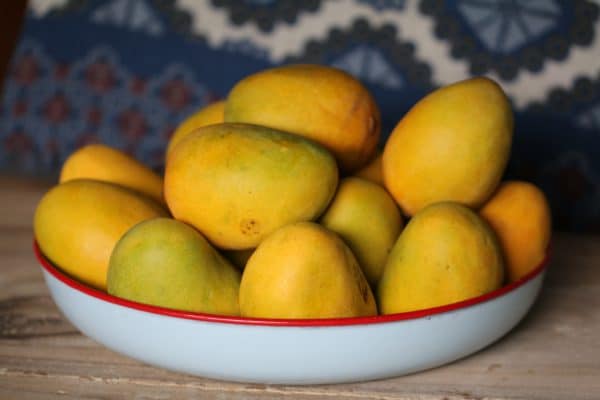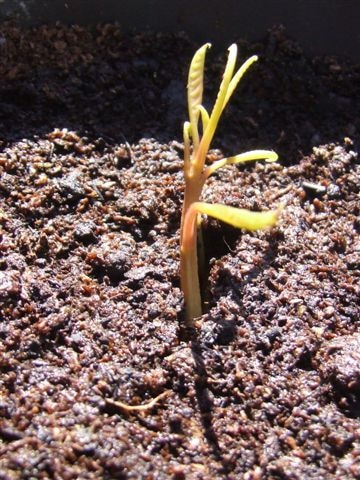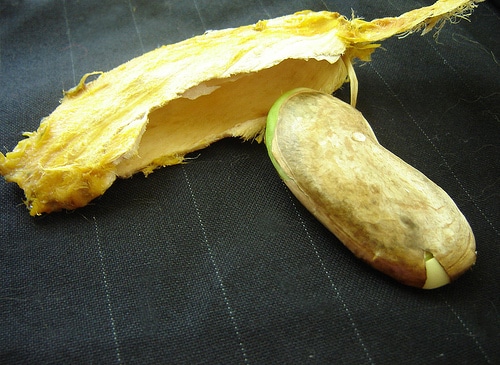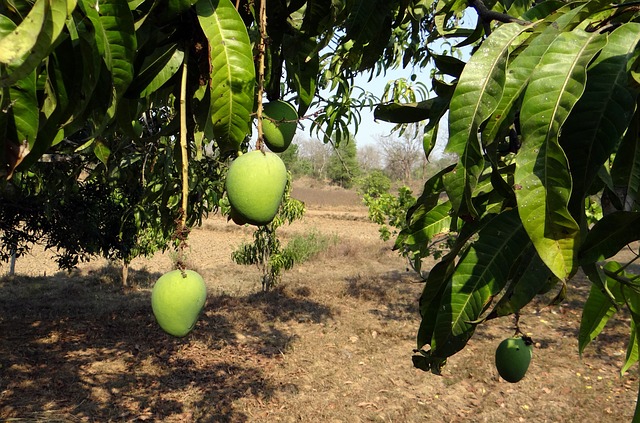Should I Grow a Mango Tree from Seed

After you finish cleaning the juice from your face gobbling up a mango, you’re left with a large seed pod. It’s pretty common to look at the seed and wonder if it could one day turn into a mango producing tree.
Should I grow a mango tree from seed? The short answer is yes. A mango tree grown from seed will eventually produce fruit. It may or may not be optimal quality fruit, but the tree will still eventually produce in the right conditions. If you have the space, proper climate, patience, or a greenhouse, then growing a mango tree from seed can be a great option. Let’ take a closer look at some of the factors that go into growing a mango tree from seed.
Benefits of Growing Mango Trees from Seed

When growing in marginal climates for tropical fruit trees, like my zone 9b, anything that can help give your tree a better chance of getting through our elements the better. One thing I’ve noticed about seed grown mangos versus grafted, is that they tend to grow more vigorously. This extra vigor can help these trees push through some of the conditions, slightly better than a slower growing grafted mango. Another benefit is that you may discover a new amazing variety. Some wonderful mango varieties originated from someone experimenting with seeds. Lastly, it’s fun and affordable. Buying a mango for a few bucks versus spending a bunch of money on a grafted tree is very cost effective. Especially if you live in marginal climates with the possibility of cold temps killing your tree. We all have fun tinkering with various gardening projects and experimenting with mango seeds can be one of those exciting things to try.
Growing a Seed from a Grocery Store Mango
First off, it’s important to note that when Mango’s are shipped into the United States they go through an irradiation process before entering the country. The mango’s are zapped by gamma rays to kill potentially harmful bugs and diseases that could be transferred with the mango. Sometimes a hot water boiling process also takes place. Another note is that shipped mango’s are generally harvested unripe, which means they may have not been able to fully reach peak ripeness. Many of the best mango varieties don’t ship well, which leaves only a handful of varieties available for purchase from stores. Some of those varieties are sub par. They most common varieties found in stores are Tommy Atkins, Keitt, Ataulfo or Manila, Haden, or Kent. Some of these varieties have a bit more fiber or stringiness to them. With all that being said, it’s still possible to grow a mango tree from a grocery store mango, but I’d recommend ordering better quality mangos from Florida if in the United States or finding fresh mangos.
How to Plant a Mango Seed

Mango seeds tend to germinate fairly easy. The first step would be to remove the husk around the seed. The husk is generally slightly larger than the seed itself, so it gives you a bit of room to cut around the husk. I use sharp scissors to cut an opening in one end, then cut a slit along one side to open the husk and remove the seed. The husk is a lot easier to work with when the flesh of the fruit is removed and dry. Be careful not to cut yourself.
Once the seed is removed, it can be germinated a few different ways. One method would be to directly sow in the ground if temps are consistently warm. Second would be to wrap it in a damp paper towel and store in a sandwich bag for a few weeks until germination occurs. Third, place it in small pot with a soil-less mix and keep it consistently moist. Once some of the leaves start forming, if started indoors, it can be hardened off, and placed outdoors.

Polyembryonic vs Monoembryonic
When it comes to growing mango trees from seed it’s important to note the difference between Polyembryonic and Monoembryonic mango types. Many of the Indian varieties of mangos tend to be Monoembryonic, which means it will not produce an exact replica of the parent tree. Since the seed only has a single embryo that was created from cross pollination it will not take on all the characteristics of the tree the mango came from. It’s likely that the tree could produce poor quality fruits, but could also turn in to an outstanding mango. It’s just hit or miss.
With a Polyembryonic mango the seed contains multiple seeds and only one of those is the cross pollinated seed, so there is a good chance that you could grow a clone of the parent tree with a Polyembryonic mango seed. Many of the Asian varieties of mangos are Polyembryonic. The Asian mango types are generally oblong and more pointed. Some Polyembryonic varieties to consider would be:
- Nam doc Mai
- Kensington Pride
- Madame Francis
- Manila
- Okrong Tung
- Lemon Zest
- Po Pyu Kalay or Lemon Meringue
- Orange Sherbet
How long before a mango tree produces fruit from seed?
One of the major benefits of purchasing a grafted tree versus growing from seed is that a grafted tree will produce fruit sooner. It may take 4 or more years before a seed grown tree starts bearing fruit. I have a seed grown mango tree going into its 4th year and it has yet to start flowering. Since a grafted tree is basically a branch from a producing tree, it can start flowering right away. If the grafted tree is young it is a good idea to snip off any potential fruit that develop so the tree can put its energy into growing the first year or two.
What if the fruit quality is poor?
One thing to consider when growing a Mango from seed is that even if the fruit is of inferior quality you can graft onto the tree. Mango scions tend to be fairly easy to graft, so you could top work your tree into multiple varieties or one specific variety you like.
Growing Conditions for Mango Trees

Mango trees love sun and warm weather, so if you’re in an area that has a lot of both, then your mango trees will be happy. Mango trees do not like temps below freezing, but can handle some brief temps down to 28 degrees Fahrenheit depending on the maturity of the tree. Mango trees prefer some dry weather during parts of the year, especially during bloom time, but will still thrive in humid climates. Diseases like Anthracnose tend to be more prevalent in consistently humid areas. Check out my post Growing Mango Trees in Hot, Dry climates, for more insight in caring for mango trees.
To summarize, growing a mango tree for a bountiful harvest of mangos from a seed is definitely possible. By utilizing some of these tips, caring for the tree over time, and a little patience, you’ll be rewarded by homegrown mangos.
Please comment below on anything that you’ve enjoyed from this post or any successes growing mango trees from seed.
